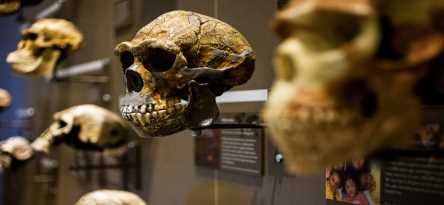Evolutionary biology is a captivating field that explores the fascinating processes and mechanisms behind the adaptation of species over time. It seeks to understand how organisms evolve and transform in response to changes in their environment, ultimately leading to the diversification and survival of different species. In this blog, we will delve into the mechanisms and evidence of species adaptation, shedding light on the intricate processes that drive evolution.
Mechanisms of Species Adaptation
Natural Selection
The principle of natural selection, proposed by Charles Darwin, is a fundamental mechanism that underlies species adaptation. Natural selection occurs when individuals with advantageous traits have a higher chance of survival and reproduction, passing those beneficial traits onto the next generation. Over time, this leads to the accumulation of adaptive characteristics within a population. Natural selection acts on various levels, including individual, group, and kin selection, shaping the genetic makeup of species.
Genetic Variation
Genetic variation plays a crucial role in species adaptation. Within a population, genetic diversity arises from mutations, genetic recombination, and gene flow. Mutations introduce new genetic variations, some of which may confer advantages in certain environmental conditions. Genetic recombination during sexual reproduction shuffles and combines existing genetic material, creating novel combinations that can enhance an organism's adaptability. Gene flow, the movement of genes between populations, can introduce new genetic material and promote adaptation in previously isolated populations.
Genetic Drift
Genetic drift refers to the random changes in gene frequencies within a population over time. It occurs due to chance events rather than selective pressures. Genetic drift is particularly influential in small populations or during population bottlenecks, where the loss of genetic diversity can impact adaptation. The effects of genetic drift can sometimes lead to the fixation of less advantageous traits, hindering the adaptive potential of a population.
Gene Expression and Regulation
Adaptation is not solely dependent on genetic variations but also on gene expression and regulation. Gene expression refers to the process by which genes are transcribed and translated into proteins. Environmental cues can influence gene expression, allowing organisms to adjust their physiological and developmental processes accordingly. Regulatory mechanisms, such as epigenetics, control gene expression without altering the underlying DNA sequence. Epigenetic modifications can be inherited and can play a significant role in the long-term adaptation of species.
Evidence of Species Adaptation
Fossil Record
The fossil record provides substantial evidence of species adaptation over time. Fossils allow us to trace the morphological changes that occurred in extinct species, revealing the gradual transitions and adaptations that took place. Examples such as the evolution of horses from small, multi-toed ancestors to modern-day, single-toed species provide clear evidence of how species have adapted over millions of years.
Comparative Anatomy and Embryology
Comparative anatomy and embryology offer insights into the adaptive modifications among different species. Homologous structures, which share a common ancestry but may serve different functions in different species, are indicative of adaptation. For instance, the forelimbs of humans, bats, and whales have different functions but share a common skeletal structure, suggesting adaptation to various environments.
Molecular Biology
Advancements in molecular biology have provided compelling evidence of species adaptation at the genetic level. DNA sequencing allows scientists to compare the genetic codes of different species, revealing similarities and differences that shed light on their evolutionary relationships. Studying the genetic changes that occur in response to environmental pressures provides direct evidence of adaptation and natural selection in action.
Experimental Studies
Experimental studies, both in the laboratory and the field, provide valuable evidence for species adaptation. Researchers can manipulate environmental conditions to observe how organisms respond and adapt over generations. Classic examples include the experiments conducted on the evolution of antibiotic resistance in bacteria, where scientists have observed the rapid adaptation of bacteria to survive in the presence of antibiotics.
Additionally, field studies offer insights into the adaptations of species in their natural habitats. Observing changes in behavior, morphology, or physiological traits in response to environmental factors provides evidence of species' ability to adapt and thrive in diverse conditions.
Conclusion
Evolutionary biology provides a comprehensive understanding of the mechanisms and evidence of species adaptation. Natural selection, genetic variation, genetic drift, and gene expression and regulation are the key mechanisms driving adaptation. The fossil record, comparative anatomy and embryology, molecular biology, and experimental studies all contribute to the wealth of evidence supporting the concept of species adaptation.
Studying evolutionary biology not only helps us unravel the history of life on Earth but also provides insights into the potential future trajectories of species. Understanding the mechanisms of adaptation can aid in conservation efforts, as well as in predicting and mitigating the impacts of environmental changes on biodiversity.
As we continue to explore the intricate processes of evolution, we gain a deeper appreciation for the remarkable ability of organisms to adapt and survive in a dynamic world. Evolutionary biology serves as a testament to the awe-inspiring diversity and resilience of life, and it continues to shape our understanding of the natural world around us.




Leave Comment